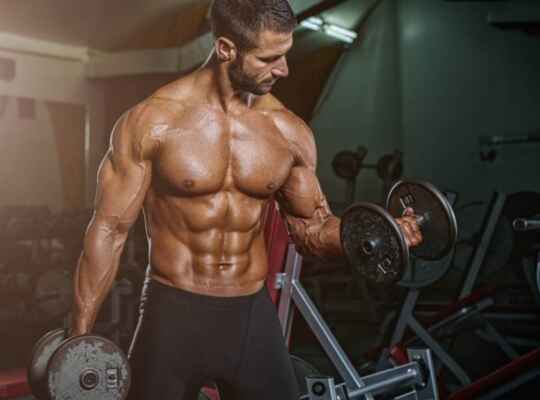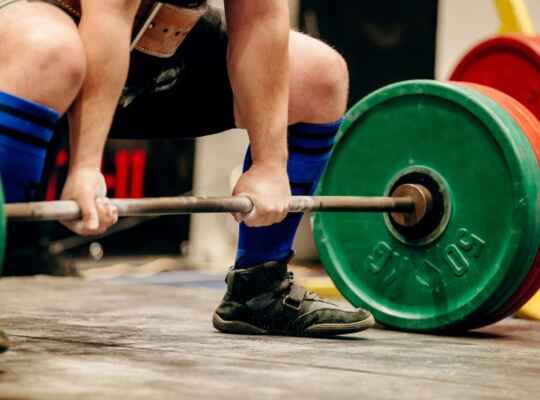- Launch Your Training Today! We're available 24/7 by Appointment Only.
- (615) 329-2747
- [email protected]
High-Intensity Interval Training Vs. Steady-State Cardio

Why One-on-One Personal Training is Worth the Investment Compared to Traditional Gyms
April 10, 2023
The Importance of Strength and Conditioning for Specialized Athletes
May 29, 2023You may feel overwhelmed trying to decide whether steady-state cardio or high-intensity interval training is best for you. Both have potential benefits, so it’s important to understand the difference in order to choose what exercise program works best for your lifestyle and fitness goals. HIIT uses short bursts of high-impact activity with brief rest periods, making it more strenuous than sustained cardio exercises like jogging or running on a treadmill.
On the other hand, steady-state cardio requires continuous low-intensity movements such as jogging over an extended period of time; typically 20 minutes, but it can be done up to 45 minutes, depending on one’s goal and schedule!
HIIT vs. Steady-State Cardio: Overview
When comparing HIIT and steady-state cardio, there are multiple aspects to consider for achieving your fitness goals. While both methods offer unique benefits, opt for the approach that suits your preferences and physical constraints.
HIIT’s intensity challenges you with quick bursts of exercise followed by recovery periods, resulting in an efficient calorie-burning session within a short timeframe. Conversely, steady-state cardio exercises such as cycling or jogging involve maintaining a consistent pace over extended durations, allowing for better endurance building without excessive strain on joints or muscles. Selecting between these two types largely depends on factors like time availability and current fitness levels.
If pressed for time but seeking significant caloric expenditure, then HIIT could be more fitting since it typically requires less commitment per workout. However, individuals new to exercising may find higher success rates with steady-state routines due to a lower risk of injury from exhaustion-related mistakes during rapid movement patterns present in many HIIT workouts. Incorporating both options into weekly schedules can provide comprehensive cardiovascular performance improvements—alternating sessions help challenge different muscle groups while preventing boredom caused by repetitiveness found when solely practicing one method exclusively throughout weeks on end.
Overall, balancing the advantages offered through diverse techniques promotes long-term health benefits achievable only through multifaceted approaches toward regular aerobic activity engagements.
Benefits of HIIT vs. Steady-State Cardio
Both HIIT and steady-state cardio provide valuable contributions towards building a comprehensive fitness regimen tailored according to one’s individual needs and personal objectives. Whether the goal is to lose or maintain current weight or achieve greater muscular strength/endurance, combining these modalities may be the key to attaining desired success faster than relying solely upon one version.
Benefits of HIIT
For those seeking rapid results and wishing to maximize the effects of their workouts, HIIT is an excellent choice. This type of training not only burns a significant amount of calories during each session but also continues burning them post-workout due to its intense nature, enhancing overall fat loss potential.
Many people find HIIT to be more manageable in terms of time commitment when compared to traditional endurance training methods. Additionally, HIIT has similar outcomes to those traditional methods for improving cardiovascular health and toning or strengthening muscles. Specifically, HIIT can help develop fast-twitch muscles which are essential for quick movements like sprints, jumps, and short bursts of activity.
Benefits of Steady-State Cardio
On the other hand, steady-state cardio offers several distinctive benefits too often overlooked by those eager for dramatic weight reductions alone! Long-duration aerobic activities are known to build stamina, enhance pulmonary function, and support the heart’s ability to efficiently pump blood throughout the body—essential factors in reducing risks of chronic diseases and maintaining optimal well-being over extended periods. Moreover, participation in low-impact sessions helps to release mood-enhancing endorphins, providing a sense of emotional uplift alongside physical rewards from consistent practice.
Additionally, there is a wide selection of activities available, such as walking, swimming, and cycling. This makes it the perfect form of exercise, catering to all levels, from beginner to expert. It can also accommodate different interests and preferences, which will make following a program easier and help reach goals related to improved health.
Disadvantages of HIIT vs. Steady-State Cardio
Disadvantages of HIIT
For HIIT, a downside is its demand for higher fitness levels to perform correctly without risking injury or fatigue. Beginners may find it challenging to execute exercises accurately at such an intensity. Thus, an inappropriate form can lead to injuries or decreased effectiveness.
Additionally, due to the demanding nature of HIIT workouts, recovery time should be longer than with steady-state cardio routines. Engaging in consecutive days of intense sessions could limit your body’s ability to repair itself completely before the next workout session begins.
Disadvantages of Steady-State Cardio
On the other hand, steady-state cardio necessitates more substantial time commitments as you typically need at least 30 minutes per session regularly for optimal results.
As compared with HIIT’s shortened duration but increased calorie burn rate within that timeframe, long-term adherence might be a challenge if you have limited free time or become bored by repetitive activities like running on a treadmill. Another disadvantage related specifically to weight loss goals involves potential plateaus reached when exclusively relying upon this traditional method alone.
In conclusion, understanding these drawbacks allows individuals the space necessary to make informed decisions regarding particular personal preferences. Ultimately, this assists in creating customizable plans designed to maximally achieve desired objectives efficiently and effectively while maintaining overall health and wellness. Both types are equally essential in a balanced approach that encourages holistic well-being, emphasizing versatility and resiliency in every aspect of physical conditioning and performance capabilities!
Considerations To Take When Choosing a Program
As you weigh the pros and cons of HIIT versus steady-state cardio, keep several factors in mind to make an informed decision. First, assess your current fitness level. If you’re new to exercise or have health concerns such as heart problems or joint pain, it’s wise to start with low-impact cardio workouts before moving on to more intense training like HIIT.
Next, think about your personal preferences and interests when selecting a workout routine. Do you enjoy fast-paced activities that challenge both body and mind? Then give HIIT a try!
On the other hand, if leisurely jogs through nature sound more appealing than high-intensity intervals at the gym, steady-state cardio is likely right for you. Another critical factor is time availability. Those pressed for time may benefit from shorter yet effective sessions provided by HIIT workouts. At the same time, someone with ample free time could prefer longer-lasting benefits derived from regular aerobic exercises like jogging.
High-intensity interval training and steady-state cardio are two beneficial ways to gain fitness. Both have unique benefits depending on one’s goals, whether that be weight loss, increased endurance, or both. At Next Level Fitness, we believe it’s important to find the best method for you as an individual and recommend beginning with a mix of HIIT and steady-state cardio so you can determine which works best for your needs!
With our expertise in fitness programming guidance, we ensure every member at Next Level finds their optimal path to success. From personal trainers who guide each step of the way to comprehensive workout plans based on current health levels, making sure people reach peak performance has been our priority since day one!




